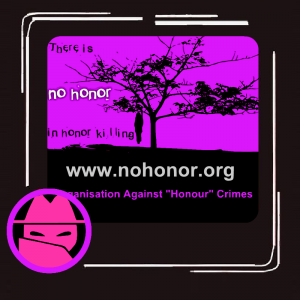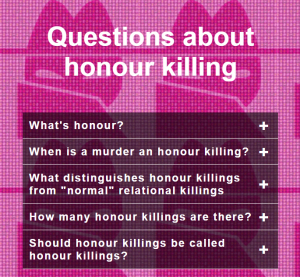Child Marriage – a Neglected Problem
Nioro Du Sahel
Two years ago, in the western Malian village of Korera-Kore, a 13-year-old girl was forced into marriage during her school summer holiday. She died after complications during sex on her wedding night.
This young Malian, whose case was documented by a local organisation called the Coordination of Women’s Associations and Non-governmental organisations (CAFO), is one of more than 60 million women globally who were married or in union before the age of 18, according to estimates by the UN Children’s Fund (UNICEF).
Campaigners say forced early marriage, or child marriage, is a problem that has been largely untouched by the international community. In Mali it is considered by the research organisation Population Council as “one of the most severe crises of child marriage in the world today”; the few workers in this field say progress is too slow.
“There hasn’t been a really concerted effort to address the issue [at the international level],” said Naana Otoo-Oyortey, a founding member of the Forum on Marriage and the Rights of Women and Girls, a network of mostly UK-based organisations who campaign against early marriage and violence against women. “It’s been a neglected issue.”
Otoo-Oyortey said unlike female genital mutilation/cutting, which is prohibited in many international conventions, child marriage receives little visibility and little funding from donors for programmes to reduce the practice, despite its link to increased rates of maternal mortality, fistula and HIV/AIDS.
Slow decline
Legal framework
In Mali, a girl is legally allowed to wed at the age of 15 with the consent of her parents. In some cases, girls younger than 15 can wed with the authorisation of a judge.
A government bill that would, among other things, raise the legal age of marriage to 18 has been on the books for five years, but has yet to be passed.
“Now, it’s a question of political will,” said Bakary Traoré, technical adviser on children at the Malian Ministry for the Promotion of Women, Children and Family.
According to Founé Samaké, lawyer and member of the Clinique juridique des femmes maliennes, a legal aid clinic, Malian law punishes the abduction of women for forced marriage by one to five years in prison. When the abducted girl is less than 15 years old, the sentence is up to 10 years of forced labour and, at the discretion of the judge, an injunction banning the convicted person from specified places for up to 20 years.
But enforcing the law is an “arduous task”, Samaké said, because family members are often accomplices in the forced marriage.
In Mali, according to the latest statistics from the 2001 Demographic and Health Survey, 65 percent of women aged 20-24 were married by the age of 18, one of the highest rates in the world. Nationwide, 25 percent of girls were married by the age of 15, and one in 10 married girls aged 15-19 gave birth before age 15.
While this marks a decrease since 1987, when 79 percent of Malian women married as children, advocates say the numbers are not dropping fast enough, largely because not enough people are working on the subject.
“The global trend has been a slow decline,” said Nassra Abass, a consultant in UNICEF’s child protection section in New York. “[But] there’s definitely a lot more that we can do.”
She said UNICEF’s focus has been on reducing female genital cutting (FGC), a movement that has “momentum”, unlike child marriage, honour killings and other traditional practices considered harmful by the UN.
“There have not been very many resources or much time invested in early marriage. There aren’t many programmes running. That’s why the decline is slow,” Abass told IRIN.
Dangers
The mild decline in early marriage in Mali has been attributed to the few education and awareness raising programmes that do exist.
In the western Malian region of Kayes, where 83 percent of girls are married by the age of 18, particular effort has been paid to informing people of the risks of early marriage.
According to the UN Population Fund (UNFPA), girls aged 15-19 are twice as likely to die during pregnancy or childbirth as women aged 20-24. Among girls aged 10-14, the risk is five times greater. Early onset of sexual activity has also been linked to increased risk of HIV/AIDS because child brides are less likely to be educated and more likely to have unprotected sex with older men who have had more sexual partners.
New research by CAFO of Nioro du Sahel, one of Kayes’s largest cities, showed that in Kayes, between 2005 and May 2007, at least 10 girls – many not yet teenagers – lost their lives because of complications after their wedding nights, sometimes due to haemorrhaging after forced intercourse.
Education
As a result, in July, CAFO joined with UNICEF, the government department responsible for the promotion of women, and the union of independent radio and TV stations, to organise the first public awareness campaign in the region of Kayes. It included a three-day workshop with religious and community leaders, informing them of the dangers of early marriage and helping them produce messages against early marriage to be broadcast in the local media. A similar workshop took place in the eastern region of Gao in June.
“We were ignorant. We married girls at 9, 10, 11 or 12 years old. Now, we’ve seen the reality. We will no longer practice this,” Diawara Mamadou, head of the town of Gogui and one of 12 community representatives present at the workshop, told IRIN.
For the last two years, UNICEF has also been working with communities in three regions of Mali – Segou, Mopti and Kayes – to inform residents of the risks, help them abandon the practice, and set up committees that will intervene in cases of early marriage. UNICEF in Mali has set up an internal working group to better coordinate work on early marriage, and hopes to extend these programmes nation-wide.
“[In Mali], we are the only ones interested in this problem,” said Fabienne Dubey, assistant programme officer for education at UNICEF-Mali. “I don’t know of other organisations working on this. It is still very rudimentary.”
UNFPA runs educational programmes focusing on reproductive health that include, but do not specifically target, early marriage. Starting in 2008, UNFPA will make early marriage more of a priority, according to reproductive health programme officer Mariam Cissoko.
What works
“The most important thing that a national government should do is ensure enforcement of its own laws,” said Kathy Selvaggio, senior policy advocate at the Massachusetts-based International Center for Research on Women, an organisation lobbying the US government to spend more of its aid money fighting early marriage.
She said legal enforcement must be combined with programmes that provide alternatives to early marriage by increasing the levels of education and economic opportunities of girls.
“Where you have successes in combating child marriage, [as in India and Ethiopia], they’ve been these comprehensive approaches,” Selvaggio told IRIN.
The Malian government does consider child marriage a form of violence against women, and “there is a whole policy to fight against violence done to women,” according to Kanté Dandara Touré, national director for the promotion of women at the Ministry for the Promotion of Women, Children and Family.
She said the national committee for the fight against detrimental practices does include early marriage in its sensitisation work, using media, community leaders and theatre, but no government program targets early marriage exclusively.
…It’s a question of priorities, and right now female genital cutting is at the top…
“It’s a question of priorities,” and right now “female genital cutting is at the top,” Touré said, noting that more than 90 percent of Malian women are circumcised.
Priorities
Making early marriage a political priority is a necessary first step for change, according to maternal mortality research by Professor Jeremy Shiffman, of the Maxwell School of Citizenship and Public Affairs of Syracuse University.
“In Honduras, safe motherhood became one of the country’s foremost health priorities, and between 1990 and 1997, the country experienced a 40 percent decline in its maternal mortality ratio, one of the most significant reductions in such a short time span ever documented in the developing world,” he wrote in a May 2007 article in the American Journal of Public Health.
He found that nine factors shaped the degree to which maternal mortality reduction emerged on the national policy agenda, including efforts by international agencies to establish a global norm concerning its unacceptability; financial and technical resources from international donors; the degree to which national advocates coalesced as a political force; the generation of national attention for the cause; and the existence of competing health causes.
|
What is an honour killing? |
|
An honour killing is a murder in the name of honour. If a brother murders his sister to restore family honour, it is an honour killing. According to activists, the most common reasons for honour killings are as the victim:
Human rights activists believe that 100,000 honour killings are carried out every year, most of which are not reported to the authorities and some are even deliberately covered up by the authorities themselves, for example because the perpetrators are good friends with local policemen, officials or politicians. Violence against girls and women remains a serious problem in Pakistan, India, Afghanistan, Iraq, Syria, Iran, Serbia and Turkey. |
Latest posts
-
Man (35) Sets His Ex-Wife (41) on Fire in Helchteren, Belgium
-
Did the Zeist police cover up an Islamic honour killing? 240 testimonies suggest they did
-
Honor Killing in Golestan, Iran: Mobina Kandabi Murdered by Her Husband
-
Femicide in Amsterdam: 30-Year-Old Dragana Stabbed to Death by Her Ex-Partner
-
Honor Killing in The Hague, Netherlands: Twelve-Year Prison Sentences for Two Perpetrators
-
Honor Killing in Khoy, Iran: Setareh Moesipoor Shot Dead by Her Brother-in-Law
-
Femicide in Iran: New Report Reveals Alarming Rise in 2024
-
Femicide in Eslamshahr, Iran: 18-year-old Fatemeh Soltani murdered by her father
-
Attempted honor killing in Kiel, Germany: Father and two sons charged
-
Honor Killing in Eslamabad-e Gharb, Iran: 12-Year-Old Aylar Zaherpour Murdered by Her Father





















































